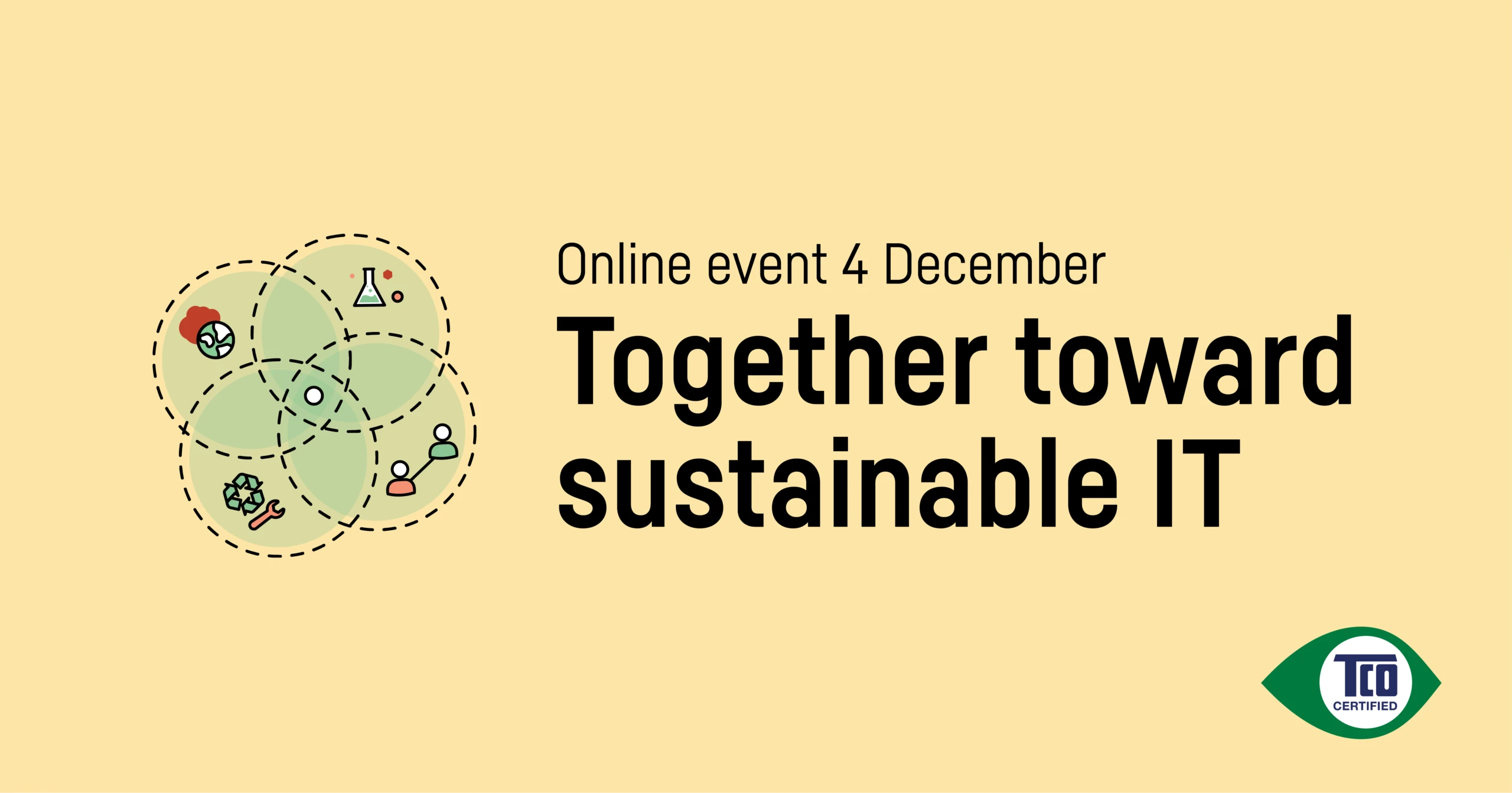Greenwashing – the use of inaccurate or exaggerated environmental claims – is increasingly becoming a key issue for professional purchasers. Sustainability certifications are one way to address greenwashing – but only if they are credible. Niclas Rydell, Director at TCO Development, shares some key pointers for what to look out for in a credible ecolabel.
“Ecolabelling can be a really good tool to fight greenwashing,” says Niclas Rydell. “But there are also labels that contribute to greenwashing. It can be the industry’s own labels, or it can be independent labels that do not gather enough proof to back up their claims.”
So, what makes a credible ecolabel?
What do you need to do to ensure that an ecolabel does not result in greenwashing and that the claims it makes are reliable and credible? Niclas Rydell identifies the following key features:
- Criteria: relevant, realistic, holistic, verifiable
- Proof: ensure compliance with the criteria
- Follow-up: compliance ensured throughout the validity period of a certificate
- Transparency: how does a label report on the impacts it creates
Criteria
Ecolabel criteria should be relevant to the product to which it is granted. They should also be realistic: not unnecessarily tough or meaninglessly easy to achieve. This helps purchasers make informed decisions about which products genuinely achieve the benefits they claim to.
Ecolabels need to be holistic in terms of covering the entire lifecycle of a product. And sustainability labels should include social as well as environmental aspects, such as fair working conditions. Lastly, it should be possible to verify the criteria.
“It should be possible to verify all criteria that are set. Criteria that are impossible to verify should not be used in a credible ecolabel,” Niclas Rydell says.
An ecolabel may not be worth as much as you had hoped if its criteria are outdated or irrelevant, for example if criteria include insignificant aspects of a product. Test methods that have so many loopholes that any product could pass also undermines the credibility of an ecolabel. Niclas Rydell points out it is often difficult for buyers to know about such loopholes.
If ecolabel criteria are flawed in these ways, you will end up with a label based on exaggerated, misleading claims that may appear impressive but that actually have little or no sustainability impact.
“This may mislead buyers away from other labels that create genuine sustainability benefits,” Niclas Rydell explains.
Proof
For a label to be credible, each criteria in a label and each product needs an independent report to document proof of compliance.
“So, you should be able to ask the certification body or label owner if there is a report that includes proof of compliance of every criteria the label has set for every labelled product – and the answer should be ‘yes’,” says Niclas Rydell.
Problems arise when a label or claims within a label are based on declarations or promises made by industries or individual companies.
“That’s quite common. Industry says it fulfills a criterion, and they say they have proof, but they can’t show it to you. And then it’s up to you (as a purchaser) to decide if you trust the industry. Having to rely on unverified industry declarations is entirely different to a situation where independent proof exists,” says Niclas Rydell.
The risk of basing a label on industry declarations is that even though they may be false, a product can keep its label.
Follow-up
Most certificates are valid for several years. So a product may receive a label and keep it, even if substantial changes occur to its content and manufacturing process. So, follow-up must be a continuous process.
“To ensure that it’s not engaging in greenwashing, the organization owning the label should conduct compliance testing throughout the certificate’s whole validity period,” Niclas Rydell says.
Depending on the type of criteria contained in a label, it may be necessary to conduct factory audits every year or every two years or buy products to test them to ensure that they continue to meet the claims made by the label, for example in terms of chemical content and energy consumption. If a product fails to meet the claims included in a label at any time, the label should be withdrawn.
This is especially important when you set criteria on socially responsible manufacturing because those criteria are based on management in factories that can change from one month to the next. For example, while the chemical content of a product is unlikely to change during its lifetime, working conditions in a factory are more likely to change.
Failure to follow-up regularly throughout the validity period of a certificate may result in inaccurate claims and products that are no longer in compliance with what their labels claim.
Transparency
“Transparency is about showing that you really create the impact that you say you create,” Niclas Rydell says.
Labels should report what sustainability impact they create and the data in such reports should be traceable to documented proof. Some labels and some organizations base their sustainability reports on assumptions or industry pledges – again, this leads to a high risk of greenwashing.
In the absence of traceable data, reporting risks being wrong or incomplete.
Here you can watch Niclas Rydell’s presentation at Global Ecolabelling Network’s webinar “Fighting Greenwashing in the Retail Sector”.






